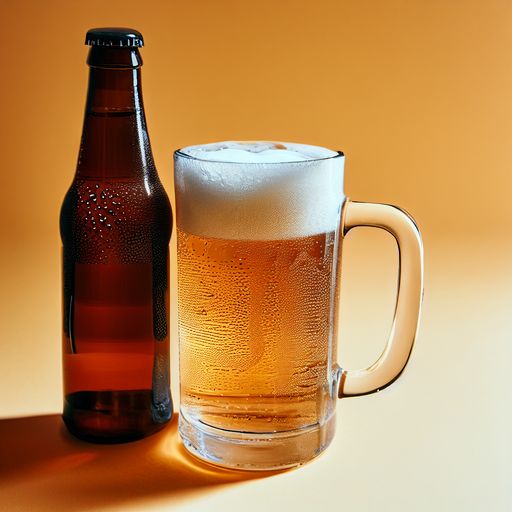What Does Beer Taste Like?
Beer is one of the most popular alcoholic beverages around the world, with an incredibly diverse range of flavors across cultures. But what exactly defines that beloved beer taste? This article will delve into the tasting notes, aromas, textures and science behind beer’s flavor profile. Read on to learn all about what gives beer its unique taste.
What is Beer?
Before analyzing beer’s taste, let’s first define what beer actually is. At its core, beer is an alcoholic beverage made from water, cereal grains, hops and yeast. The brewing process generally involves soaking grains like barley or wheat to release sugars, then boiling them with hops. Yeast ferments the sugars, producing alcohol and carbonation. The beer is then aged, filtered and packaged.
There are countless styles of beer across various cultures. The main overarching categories are ales and lagers. Ales are made with top-fermenting yeasts at warmer temperatures, creating fruitier, fuller-bodied beers. Lagers use bottom-fermenting yeasts at colder temperatures, yielding crisp, clean flavors.
Popular styles include India Pale Ales (IPAs), stouts, porters, wheats, sours, pilsners, saisons and more. Beer is enjoyed worldwide in pubs, restaurants, at sporting events, parties and other social gatherings.
Now that we know the basics, let’s explore that age-old question…
What Does Beer Actually Taste Like?
At its core, beer tastes bitter, owing to the hops used during brewing. The bitterness is balanced by sweet, malty flavors from the grains. Most beers also take on notes ranging from hoppy, sour and wheaty to fruity, spicy or nutty. The alcohol adds undertones of warmth and booziness.
To dive deeper, lagers tend to taste crisp and clean, while ales have more complex, robust flavors. For example, a light American lager may have a smooth, neutral grainy taste and low bitterness. On the other hand, an India Pale Ale can taste quite hoppy and bitter, with citrusy flavors.
A brown ale may showcase sweet caramel and toffee notes, while a stout offers intense chocolate and coffee tastes. Stronger beers taste distinctly warming and boozy, while lighter beers allow more delicate flavors to shine.
In essence, the core beer taste balances bitter and sweet, but the precise flavors depend on the style, ingredients and brewing methods used.
Key Components That Shape Beer’s Flavor

There are several key ingredients and components that contribute to beer’s bitterness, sweetness, aromas and mouthfeel:
- Hops: Hops give beer its characteristic bitterness and added hoppy flavors and aromas. More hops mean a more bitter brew.
- Malt: Malted grains like barley provide sweet, bready maltiness to balance the hops’ bitterness. Darker malts also add flavors like coffee, chocolate or toast.
- Yeast: The yeast strain imparts its own unique flavors during fermentation. Certain yeasts yield fruitier versus drier and more neutral beers.
- Fruit: Many beers incorporate fruit flavors like citrus, berries and tropical fruits. These add tart, sweet, aromatic dimensions.
- Acidity: Beer gains tanginess and brightness from various organic acids produced during fermentation. Higher acidity increases the sour taste.
- Alcohol: Ethanol and other alcohols contribute warming, sometimes spicy flavors. Stronger beers taste distinctly boozy.
Other descriptive terms like crisp, floral, nutty or funky also help characterize beer’s taste. With so many variables, it’s no wonder beers can taste so different!
The Diverse Flavors Within the Major Beer Types
Given beer’s complex ingredients and brewing processes, even beers within the same category can vary widely in taste. Let’s break down the flavor profiles of some major beer types:
Ales
- Pale Ales: Moderate hoppiness with piney, citrus flavors. Slightly fruity and spicey.
- Amber Ales: Balance of malty sweetness and moderate bitterness, with caramel, biscuit or toffee notes.
- Brown Ales: Prominent caramel and chocolate flavors, with low to moderate bitterness. Sweet and malty overall.
- Porters: Complex mix of chocolate, coffee and toasty malt flavors. Hop bitterness varies.
- Stouts: Very dark, creamy and full-bodied with flavors like coffee, dark chocolate and dried fruit. Low hop bitterness.
- Wheat Beers: Light and crisp with hints of banana, bread and citrus. Some added tartness or spice.
- Sours: Tart and funky with bright citric acidity. Fruity flavors ranging from lemon to tropical fruits.
Lagers
- Pilsners: Crisp, clean maltiness with prominent hop bitterness and floral, herbal notes.
- Amber Lagers: Smooth, malty backbone with medium bitterness. Caramel and toasted flavors.
- Dark Lagers: Roasted malt flavors like coffee and toast, with low to moderate bitterness.
As shown, the possibilities span light citrus wheats to roasty stouts and everything in between. The list goes on, including unique styles like saisons, bocks and IPAs. With so many options, part of the intrigue of beer is discovering new tastes.
What Factors Influence the Flavor?
While ingredients form the foundation, several other factors shape beer’s final flavor profile:
- Style: Ales taste different from lagers, and styles within each vary based on ingredients and methods.
- Grain bill: More specialty malts mean more caramel, roast, biscuit flavors. Adjuncts like rice or corn lighten the flavor.
- Hop varieties: Different hops provide their own aromas, from piney and floral to fruity and spicy.
- Yeast strain: Major differences between ale and lager yeasts, and within each type.
- Water chemistry: Minerals in the water interact with mash chemistry to influence flavor.
- Fermentation temperature: Warmer or cooler temperatures produce different compounds.
- Aging methods: Lagering, barrel-aging, bottle-conditioning impart flavors over time.
- Serving temperature: Warmer releases more aromatics, cooler enhances crispness.
- Glassware: Shape and material impacts aroma, appearance, mouthfeel and carbonation.
With mastery of these variables, brewers dial in their desired beer taste, aroma and mouthfeel.
What About Beer and Health?

Despite being an alcoholic beverage, beer may offer some potential health benefits when consumed in moderation. These include:
- Antioxidants: Hops and malt contain polyphenols that may improve heart health.
- Silicon: Linked to increased bone density.
- B Vitamins: Aid metabolism and nerve function.
- Soluble fiber: Can regulate blood sugar response.
However, excess beer consumption clearly carries health risks like liver damage, increased blood pressure, weight gain and certain cancers.
Moderation guidelines are generally 1 drink or less per day for women, and 2 drinks or less per day for men. Consulting your doctor for personalized advice is recommended.
Why Does Beer Taste Better in a Glass?
Drinking beer from an appropriate glassware truly enhances the tasting experience versus drinking straight from the bottle or can. Here’s why proper glassware improves beer’s flavor:
- Aromas are released as beer is poured into the glass.
- Glass allows you to appreciate the beer’s appearance and color.
- Shapes like tulips and goblets concentrate aromas.
- Curved sides enhance crispness and carbonation.
- Glass regulates temperature better than aluminum or steel.
So feel free to pour your next beer into a nice glass and take your time appreciating the flavors!
Frequently Asked Questions
What are the main types of beer?
The two biggest categories are ales and lagers. Ales are fermented warm with top-fermenting yeasts, while lagers ferment cold with bottom-fermenting yeasts.
Is beer addictive?
Alcohol is addictive, so excessive beer drinking can potentially lead to alcohol dependence. The flavor and social context also play a role in beer’s addictive qualities for some.
Is beer good for your heart?
In moderation, beer provides antioxidants from hops and malt that may benefit heart health. But excess drinking negates any benefits.
How would you describe beer’s taste?
Most beers taste bitter from the hops, balanced by sweet maltiness. Beyond that, flavors span a wide spectrum depending on ingredients and style.
What does beer taste like the first time you try it?
Many find beer’s bitterness and carbonation quite intense at first. The taste buds adjust over time to appreciate the complex flavors. Finding milder styles can help get used to the profile.
Conclusion
In summary, beer offers an incredibly diverse range of tastes, spanning bitter, hoppy, malty, fruity, citrusy, chocolatey and more. The brewing ingredients and methods yield vastly different flavor profiles. While bitter and sweet balance forms the foundation, exploring all the variances across styles is what makes beer tasting so fun. Hopefully this guide provides some insight into the complex tastes within this beloved beverage. Beer’s richness continues to inspire curiosity and passion worldwide. So grab a nice glass, try a new style and join in the age-old exploration of beer’s flavor!
